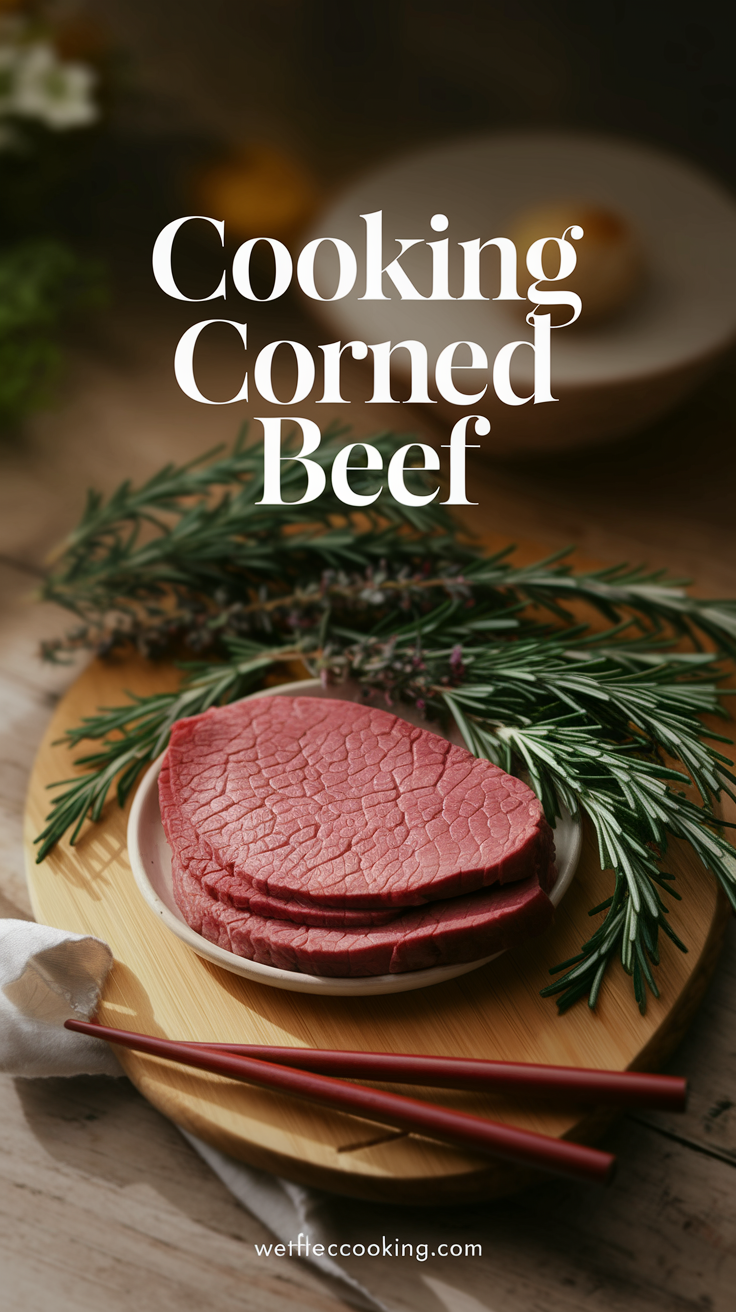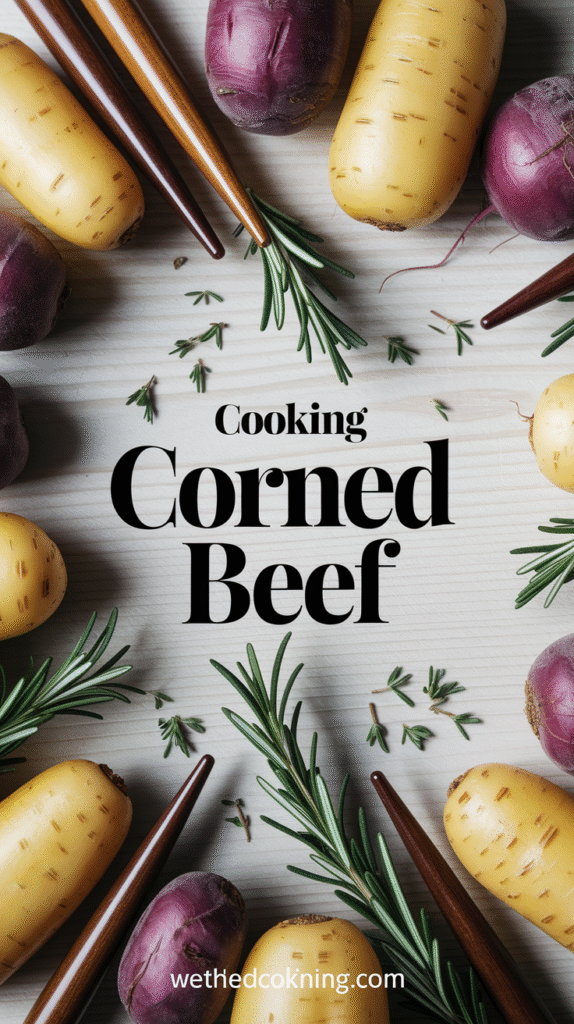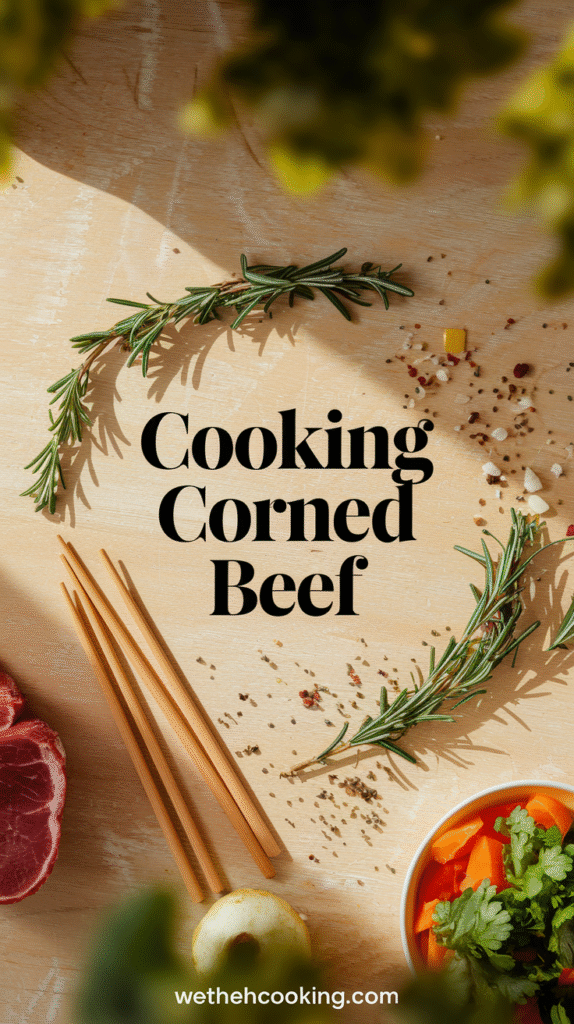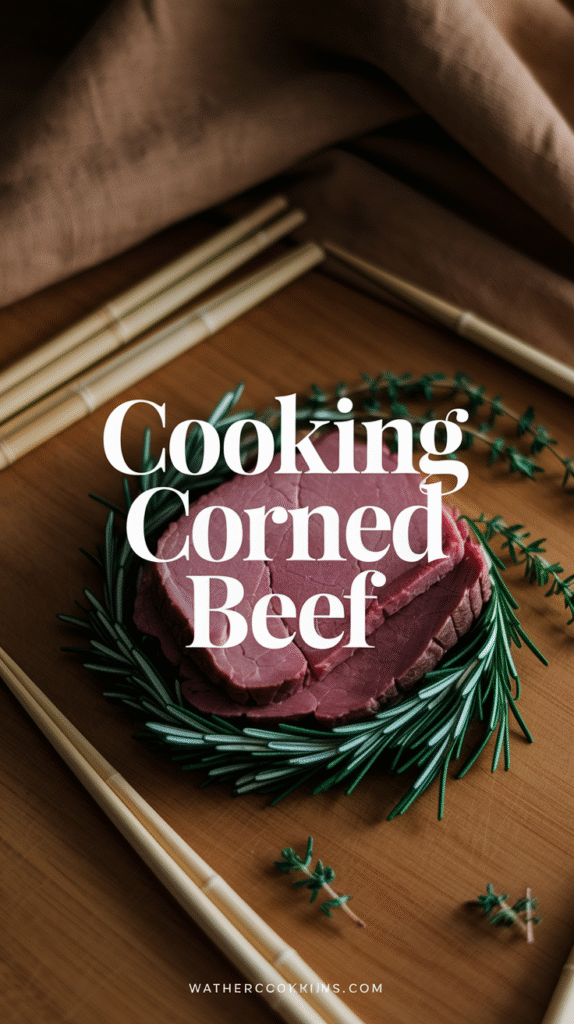Cooking corned beef can transform this beloved cut of meat into a mouthwatering dish that delights many taste buds. Whether you’re preparing it for St. Patrick’s Day or any occasion, getting it just right can elevate your kitchen skills. Here are some techniques and tips that will guide you to corned beef perfection.
Choosing the Right Cut
To begin your corned beef cooking journey, you need to choose the right cut of meat. The two main options are:
- Brisket: This is the most common cut used for corned beef. It is flavorful and tender when cooked correctly.
- Round: This cut is leaner and less fatty. While it may be a healthier option, it can be less tender than brisket.
Preparation Tips
Once you’ve selected your cut, preparation is key to ensuring your corned beef is juicy and full of flavor.
- Rinse the Meat: Rinse your corned beef under cold water. This helps remove some of the excess salt from the brine.
- Dry Rub: You can add a dry rub consisting of spices like black pepper, garlic powder, and brown sugar for an added layer of flavor.
Cooking Techniques
There are various methods to cook corned beef, each yielding delicious results. Here are the most popular techniques:
1. Boiling
This is the traditional method. Boiling corned beef results in a tender and flavorful dish.
- Place the rinsed corned beef in a large pot.
- Add enough water to cover the meat.
- Bring it to a boil, then reduce to a simmer. Cook for about 2.5 to 3 hours until tender.
2. Braising
Braising offers a combination of dry and wet heat, intensifying flavors.
- Start by searing the corned beef in a hot pan until browned on all sides.
- Add chopped onions, carrots, and celery for flavor.
- Pour in beef broth and cover. Let it simmer for 2-3 hours.
3. Slow Cooking
If you’re short on time, using a slow cooker is a fantastic option.
- Place the rinsed corned beef in the slow cooker.
- Add your favorite vegetables, such as potatoes and cabbage.
- Pour in enough liquid (beef broth or water) to cover the meat halfway.
- Cook on low for 8-10 hours.
Adding Flavor
In addition to the basic cooking methods, here are more tips to enhance the flavor of your corned beef:
- Spices: You can include bay leaves, cloves, and mustard seeds during cooking to deepen the taste.
- Guinness or Stout Beer: Add a little Guinness to the cooking pot to give the meat a rich and unique flavor.
- Sauerkraut: For a twist, add sauerkraut during the last hour of cooking.
Serving Suggestions
Once your corned beef is cooked to perfection, it’s time to serve. Here are some great serving suggestions:
- Slice thinly against the grain, which helps keep the meat tender.
- Serve with traditional sides like cabbage, carrots, and potatoes.
- Make a corned beef sandwich with rye bread, mustard, and pickles for a classic deli experience.
Storing Leftovers
If you have leftover corned beef, it can last in the fridge for up to four days. Just make sure to store it in an airtight container. You can also freeze it for longer storage; it should maintain its best quality for about two months.
Cooking corned beef can be both an art and a science, but with these techniques and tips, you’ll surely create a delicious dish that stands out. For more inspiration, check out Food Network or Serious Eats for various recipes and ideas.
The History and Cultural Significance of Corned Beef
Corned beef has a rich history that spans centuries and continents, and its cultural significance is deeply woven into the tapestry of several societies. The process of corning beef involves curing it with large grains of rock salt, which gives the meat its distinct flavor and preserves it for longer periods. This practice dates back to ancient times when salting was one of the primary methods of food preservation.
The origins of corned beef can be traced back to the Middle Ages in Europe, particularly Ireland and England. In Ireland, corned beef became a staple during the 17th century. It was often produced for export, particularly to the United States, where Irish immigrants would later embrace it as a significant part of their celebratory feasts, especially surrounding St. Patrick’s Day. This tradition has shaped Irish-American culture in profound ways, with corned beef and cabbage often being served as a symbol of unity and celebration.
The process of making corned beef accentuates its cultural relevance. Typically, the meat used is the brisket, which is less expensive than other cuts, making it accessible for working-class families. The brining solution, traditionally made with salt, sugar, and spices like coriander and black pepper, enhances the flavor and contributes to the dish’s signature pink color. Through ingenuity and the necessity for affordable food, corned beef became a dish that represented resilience and adaptability among immigrant communities.
As the dish spread to America, it evolved. It was first popularized in New York City, where many Irish immigrants settled. Here, the dish grew in cultural significance, becoming synonymous with Irish-American celebrations. As the population began to integrate more into American society, corned beef took on new life in various forms.
Today, corned beef is not just a meal; it is a culinary tradition that reflects a rich heritage. The association with St. Patrick’s Day further cements its status, as many people participate in this important festival by preparing and sharing corned beef, often accompanied by cabbage and potatoes. The simplicity of corned beef also means it can adapt to modern culinary trends, and recipes are now abundant across food blogs and cooking sites, including Food Network, where various preparations cater to a new generation.
The dish has also carved out a place at deli counters, with corned beef sandwiches being particularly favored. When you step into a Jewish deli in America, you’ll find corned beef featured prominently, often stacked high on rye bread with mustard—a delicious nod to the dish’s versatility and enduring popularity.
Moreover, the significance of corned beef extends beyond individual cultures. It has become a symbol of community dining, bringing people together irrespective of their backgrounds. This shared experience is a vital part of many social gatherings, showcasing how food can bridge divides and foster a sense of belonging.
The global popularity of corned beef has inspired chefs to craft unique interpretations of the dish. From corned beef tacos to gourmet sliders, its adaptability showcases how traditional meals can transform while still respecting their roots. This innovation keeps the essence of corned beef alive, reflecting ongoing cultural exchanges within culinary contexts.
Here’s a quick look at the cultural journey of corned beef through time:
| Period | Location | Significance |
|---|---|---|
| Middle Ages | Europe | Introduction of salt curing methods |
| 17th Century | Ireland | Becomes a staple, primarily exported |
| 19th Century | United States | Embraced by Irish immigrants; linked to St. Patrick’s Day |
| Modern Day | Global | Celebrated in diverse culinary forms |
The journey of corned beef is a reflection of cultural exchange, resilience, and community. Whether enjoyed at a holiday feast, a casual dinner, or in a bustling deli, this beloved dish carries with it centuries of tradition and significance. By appreciating its history, we can better understand what it means to share a meal that is as flavorful as it is meaningful.
Creative Recipes Using Leftover Corned Beef
Leftover corned beef is a culinary treasure waiting to be transformed into new, delightful dishes. Whether you’ve prepared a classic corned beef and cabbage or enjoyed it as a sandwich, reinvigorating those leftovers can lead to delicious meals. Here are some creative recipes that will help you make the most of your leftover corned beef.
Hearty Corned Beef Hash
This breakfast classic is a perfect way to start your day. Corned beef hash combines sautéed vegetables, potatoes, and your leftovers into a satisfying meal. It’s simple to prepare and packed with flavor.
- 1 cup leftover corned beef, diced
- 2 cups potatoes, diced and cooked
- 1 onion, chopped
- 1 bell pepper, chopped
- 2 tablespoons olive oil
- Salt and pepper, to taste
- Optional: eggs for frying
Heat the olive oil in a skillet over medium heat. Add the onion and bell pepper, cooking until soft. Stir in the potatoes and corned beef, cooking until heated through and crispy. You can top it with fried eggs for an extra treat!
Corned Beef Tacos
Give a twist to taco night with corned beef. Using corn tortillas filled with savory functionality, each bite will be flavorful and fun.
- 1 cup leftover corned beef, shredded
- 1/2 cup cabbage, shredded
- 1/4 cup salsa
- 1 avocado, sliced
- Cilantro for garnish
Warm the tortillas in a pan over low heat. Fill each with corned beef, shredded cabbage, and top with salsa and avocado. Garnish with cilantro and enjoy a delightful twist on traditional tacos.
Corned Beef Fried Rice
This dish is an excellent way to utilize not just corned beef but also any leftover rice. It’s incredibly versatile and sure to please.
- 2 cups cooked rice
- 1 cup leftover corned beef, chopped
- 1/2 cup peas and carrots (frozen is fine)
- 2 eggs, beaten
- 3 tablespoons soy sauce
- 2 tablespoons green onions, sliced
In a large skillet or wok, scramble the eggs and set aside. Then, add the peas and carrots, cooking until tender. Stir in the rice, corned beef, and soy sauce, mixing well. Add the eggs back in and toss everything together with the green onions. Serve hot for a delightful fusion dish.
Corned Beef Sliders
These mini sandwiches make fantastic snacks or appetizers. They’re easy to assemble and quite satisfying.
- Slider buns
- 1 cup leftover corned beef, sliced
- 1/2 cup sauerkraut
- Swiss cheese slices
- Russian dressing or mustard
Preheat your oven to 350°F (175°C). Layer the bottom halves of the slider buns with corned beef, sauerkraut, and a slice of Swiss cheese. Drizzle with dressing, place the top half of the bun, and bake for about 10 minutes, until the cheese melts and the buns are golden.
Corned Beef Soup
Instead of tossing out your leftovers, turn them into a comforting and warming soup that’s perfect for any day.
- 1 cup leftover corned beef, diced
- 4 cups beef broth
- 1 onion, chopped
- 2 carrots, sliced
- 2 potatoes, diced
- 1 tablespoon thyme
In a large pot, sauté the onion until transparent. Add the carrots and potatoes, continuing cooking for a few minutes. Pour in the broth, corned beef, and thyme. Simmer until the vegetables are tender, season to taste, and serve hot.
Using leftover corned beef opens doors to a variety of easy and delicious meal options. For more recipes and tips on using corned beef, you can visit Simply Recipes and AllRecipes.
Your imagination is the limit when it comes to reusing corned beef in your meals. Enjoy exploring these recipes and savoring the flavors of your creative culinary adventures!
Pairing Sides and Beverages with Corned Beef Dishes
Corned beef is a beloved dish known for its rich flavor and tenderness. It pairs exceptionally well with a variety of sides and beverages, making it a favorite for gatherings and festive occasions. Whether you are preparing a traditional dish or experimenting with modern variations, understanding the best complements can enhance your meal. Here are some delicious options to consider for your next corned beef feast.
Savory Side Dishes
When it comes to sides, choosing dishes that complement the saltiness and texture of corned beef is essential. Here are some top choices:
- Colcannon: This classic Irish dish features mashed potatoes mixed with kale or cabbage. It brings a creamy texture and balances the meat’s richness.
- Boiled Cabbage: A simple side that echoes traditional preparations. The slight bitterness of cabbage pairs wonderfully with the corned beef’s robust flavors.
- Carrots and Parsnips: Roasted or glazed root vegetables add a touch of sweetness, creating a lovely contrast to the savory beef.
- Potato Salad: A chilled version, especially one with mustard dressing, offers a refreshing palate cleanser between bites of corned beef.
- Irish Soda Bread: This dense bread is perfect for soaking up juices and adds a delightful texture alongside corned beef.
Choosing the Right Condiments
To elevate your corned beef, consider different condiments to enhance the flavor profile:
- Mustard: Particularly grainy or spicy mustard provides a kick that pairs well with the meat.
- Horseradish: A classic choice that offers sharpness, balancing the meat’s richness.
- Pickles: Sweet or dill pickles add a welcomed crunch and acidity, contrasting beautifully with the beef.
Perfect Beverage Pairings
The right beverage can complete a meal. Different options can either enhance the flavors of the corned beef or cleanse the palate:
- Irish Beer: A traditional pairing, Irish stouts or pale ales work excellently. They are hearty enough to stand up to the meat without overwhelming it. Check out Irish Beer for varietals you can try.
- Red Wine: A light-bodied red, such as Pinot Noir, complements the savory aspects and enhances the flavors nicely.
- Cider: Dry hard cider offers a fruity note that brightens the meal, providing a refreshing contrast to the intensity of corned beef.
- Whiskey: A small glass of whiskey can be an excellent choice, enhancing the flavors of the dish while providing warmth, especially in colder months.
Serving Suggestions
When serving corned beef, presentation can make a difference. Here are some serving ideas:
- Slice the corned beef against the grain for maximum tenderness.
- Arrange the sides that complement the beef around it on a large platter for an inviting display.
- Include small bowls for condiments to encourage guests to mix and match flavors.
Exploring creative pairings can transform a simple corned beef meal into a delightful culinary experience. To dive deeper into recipes and innovative ways to enjoy corned beef and its compliments, visit Cooking Light and Food Network.
With this guide, you can confidently prepare a delicious meal featuring corned beef, enhancing it with the perfect sides and beverages. Remember, the key is balance—choosing flavors that will harmonize well will leave a lasting impression on your plate!
Exploring Different Cuts of Beef for Making Corned Beef
When it comes to cooking corned beef, choosing the right cut of beef is vital for achieving the most tender and flavorful results. Corned beef is typically made from specific cuts derived from the brisket, but you may find other cuts worth exploring. In this guide, we’ll take a closer look at different cuts of beef you can use to make this classic dish, along with tips on their characteristics and cooking methods.
Brisket
The most popular and traditional cut for making corned beef is the brisket. This cut comes from the chest area of the cow and includes two main parts: the flat and the point. Each portion has its unique attributes.
- Flat Cut: The flat cut is leaner and has a uniform thickness, making it ideal for slicing. It’s the preferred choice among many for sandwiches because it tends to be more tender and can be shredded easily.
- Point Cut: The point cut has more marbling and fat, providing a richer flavor. It’s a great option if you prefer a juicier result. However, it might not slice as neatly as the flat cut.
Round
Another option for making corned beef is the round cut, which comes from the hindquarters of the cow. It’s a leaner cut compared to brisket but can still work well if prepared properly.
- Top Round: This cut is lean and less fatty, making it less flavorful than brisket. However, it works well if you brine it correctly and cook it slowly to enhance tenderness.
- Bottom Round: Bottom round is slightly tougher than top round. Consider braising or slow cooking to break down the fibers and make it delicious for corned beef.
Chuck
Chuck is a flavorful and economical option for corned beef. This cut comes from the shoulder area and is known for its rich taste and adequate fat content. It can be particularly good for corned beef if you prefer a hearty and robust flavor.
- Chuck Roast: This chuck roast has a lot of marbling and can break down beautifully during cooking. Be prepared for a slightly longer cooking time to achieve maximum tenderness.
Rib
If you want to indulge in something more luxurious, consider using rib cuts for corned beef. Ribeye and prime rib could make for a mouthwatering corned beef experience.
- Ribeye: Known for its tenderness, ribeye can deliver a flavorful corned beef dish due to its fat content. Prepare it with care to prevent it from drying out during cooking.
- Prime Rib: This high-end cut will yield a decadent corned beef, but it is usually more expensive. If using prime rib, make sure to enjoy every flavorful bite!
Factors to Consider
While selecting the cut for corned beef, consider the following:
- Fat Content: Cuts with higher fat content will generally yield richer flavors, but lean cuts can still produce satisfying results if cooked correctly.
- Cooking Method: Since corned beef typically requires long, slow cooking, choose cuts that can withstand this process without becoming too tough.
- Availability: Some cuts might be more available in your local butcher shop or grocery store than others. Be flexible with your choice if necessary.
The choice of beef cut plays a significant role in the texture and flavor of your corned beef. Whether you settle for the traditional brisket or explore other options like round or chuck, knowing the characteristics of each cut will enhance your cooking experience. Don’t hesitate to visit [Beef. It’s What’s for Dinner](https://www.beefitswhatsfordinner.com) for tips and additional recipes on cooking corned beef.
With the right cut and proper preparation, cooking corned beef can be a rewarding endeavor that delights your family and friends at the dinner table. Happy cooking!
Conclusion
Cooking corned beef is more than just a culinary activity; it’s an exploration of tradition, flavor, and creativity. By mastering various techniques and tips, you can elevate this dish to new heights, ensuring it’s tender and flavorful every time. Understanding the rich history and cultural significance of corned beef connects you deeper to the meal, allowing you to appreciate each bite’s heritage.
Once you’ve savored your perfectly cooked corned beef, don’t let the leftovers go to waste. Creative recipes can turn remnants into delightful new meals, showcasing the versatility of this beloved dish. Think beyond the traditional platter and consider how you can incorporate corned beef into soups, sandwiches, and more.
Pairing sides and beverages is another exciting aspect of enjoying corned beef. Whether you choose crunchy coleslaw, creamy mashed potatoes, or tangy pickles, the right accompaniments can enhance your dining experience and provide a well-rounded meal. Similarly, selecting the right beverage, whether it’s a classic stout or a crisp lager, can beautifully complement the flavors of corned beef.
While choosing your cuts of beef, it pays to explore the different options available. Each cut presents unique textures and flavors, impacting the final outcome of your corned beef dish. By experimenting with different preparations, you can find the perfect match for your taste buds.
Ultimately, cooking corned beef invites you to explore a world filled with tradition, innovation, and unforgettable flavors. Embrace the journey, and let each meal be a celebration of this time-honored dish.







Leave a Reply